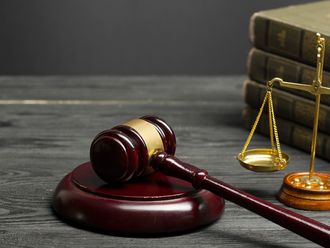Sixty years ago yesterday, an atomic bomb was dropped without warning on the centre of the Japanese city of Hiroshima.
One hundred and forty thousand people were killed, more than 95 per cent of them women and children and other non-combatants.
At least half of the victims died of radiation poisoning over the next few months. Three days after Hiroshima was obliterated, the city of Nagasaki suffered a similar fate.
The magnitude of death was enormous, but on August 14, 1945 just five days after the Nagasaki bombing Radio Tokyo announced that the Japanese emperor had accepted the US terms for surrender.
To many Americans at the time, and still for many today, it seemed clear that the bomb had ended the war, even "saving" a million lives that might have been lost if the US had been required to invade mainland Japan.
This powerful narrative took root quickly and is now deeply embedded in our historical sense of who we are as a nation.
A decade ago, on the 50th anniversary, this narrative was reinforced in an exhibit at the Smithsonian Institution on the Enola Gay, the plane that dropped the first bomb.
The exhibit, which had been the subject of a bruising political battle, presented nearly 4 million Americans with an officially sanctioned view of the atomic bombings that again portrayed them as a necessary act in a just war.
But although patriotically correct, the exhibit and the narrative on which it was based were historically inaccurate.
For one thing, the Smithsonian downplayed the casualties, saying only that the bombs "caused many tens of thousands of deaths" and that Hiroshima was "a definite military target".
Not straightforward
Americans were also told that use of the bombs "led to the immediate surrender of Japan and made unnecessary the planned invasion of the Japanese home islands".
But it's not that straightforward. As Tsuyoshi Hasegawa has shown definitively in his new book, Racing the Enemy and many other historians have long argued it was the Soviet Union's entry into the Pacific war on August 8, two days after the Hiroshima bombing, that provided the final "shock" that led to Japan's capitulation.
The Enola Gay exhibit also repeated such outright lies as the assertion that "special leaflets were dropped on Japanese cities" warning civilians to evacuate.
The fact is that atomic bomb warning leaflets were dropped on Japanese cities, but only after Hiroshima and Nagasaki had been destroyed.
The hard truth is that the atomic bombings were unnecessary. A million lives were not saved.
Indeed, McGeorge Bundy, the man who first popularised this figure, later confessed that he had pulled it out of thin air in order to justify the bombings in a 1947 Harper's magazine essay he had ghostwritten for Secretary of War Henry L. Stimson.
The bomb was dropped, as J. Robert Oppenheimer, scientific director of the Manhattan Project, said in November 1945, on "an essentially defeated enemy".
President Harry Truman and his closest adviser, Secretary of State James Byrnes, quite plainly used it primarily to prevent the Soviets from sharing in the occupation of Japan.
And they used it on August 6 even though they had agreed among themselves as they returned home from the Potsdam Conference on August 3 that the Japanese were looking for peace.
These unpleasant historical facts were censored from the 1995 Smithsonian exhibit, an action that should trouble every American. When a government substitutes an officially sanctioned view for publicly debated history, democracy is diminished.
Today, in the post-9/11 era, it is critically important that the US face the truth about the atomic bomb.
For one thing, the myths surrounding Hiroshima have made it possible for our defence establishment to argue that atomic bombs are legitimate weapons that belong in a democracy's arsenal.
But if, as Oppenheimer said, "they are weapons of aggression, of surprise and of terror", how can a democracy rely on such weapons?
Presciently, he even warned us against what is now our worst national nightmare and Osama Bin Laden's frequently voiced dream an atomic suitcase bomb smuggled into an American city.
Bin Laden repeatedly refers to Hiroshima in his rambling speeches. It was, he believes, the atomic bombings that shocked the Japanese imperial government into an early surrender and, he says, he is planning an atomic attack on the US that will similarly shock the US into retreating from the Middle East.
Finally, Hiroshima's myths have given rise to an American unilateralism born of atomic arrogance.
Oppenheimer warned against this "sleazy sense of omnipotence".
He observed that "if you approach the problem and say, 'We know what is right and we would like to use the atomic bomb to persuade you to agree with us', then you are in a very weak position and you will not succeed ... You will find yourselves attempting by force of arms to prevent a disaster".
Kai Bird and Martin J. Sherwin are coauthors of American Prometheus: The Triumph and Tragedy of J. Robert Oppenheimer, published earlier this year by Knopf.
Los Angeles Times-Washington Post News Service












